Located on the east of Oahu, Nu’uanu Pali is a scenic spot in Hawaii. It’s a great lookout point on the island that offers breathtaking views of the lush nature and mountains all around.
If you’re confused about where on the east side of Oahu it is situated, to be more precise, it’s situated on the vibrant windward coast of the Koolau mountain range.
Nu’uanu Pali is not just a tourist site; it’s a must-see destination. Its popularity draws in hundreds of visitors daily. If you’re in Honolulu, this is an experience you simply can’t afford to miss.
This place is not just about tall trees and stunning views, but it also has a lot of story to tell than you could ever imagine.
The History Of Nu’uanu Pali Lookout
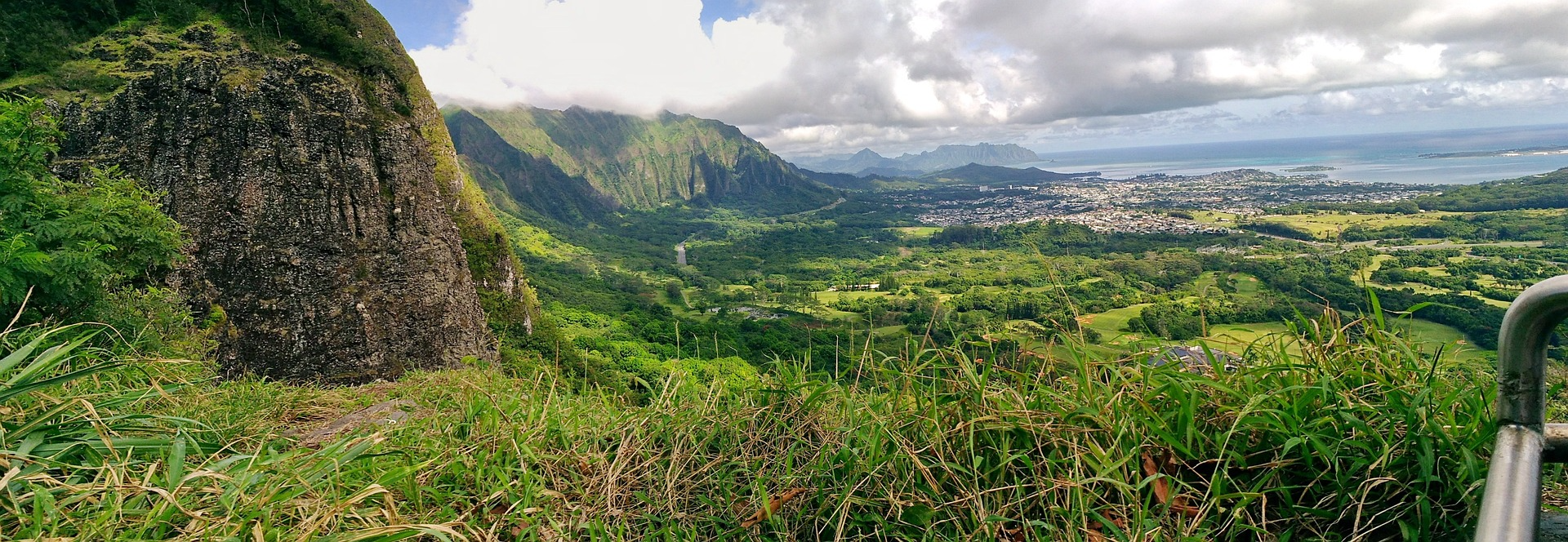
In Hawai’ian, “Pali” means cliff and “Nu`uanu” means cool heights. A million and a half years ago, when Oahu was still forming, a massive landslide occurred and nearly one third of the island fell into the ocean.
This force created a tsunami wave over two thousand feet high that rose up and covered ninety-five percent of the island of Lānaʻi.
The Nu`uanu Pali Lookout is not only a site steeped in Native Hawaiian history, particularly focusing on its significance in the unification of the Hawaiian island chain through the great Battle of Nuuanu, but it is also 12,000 feet above sea level; overlooking the 985-foot cliffs of the Ko’olau Mountain Range and offers one of the best views of Oʻahu as a scenic lookout.
From this vantage point, you can see Kaneohe Bay, Chinaman’s Hat, Hawai’i Pacific University’s Windward Campus, the University of Hawai’i’s Marine Biology Research Center, and Coconut Island.
If you find that the island looks a bit familiar, the exterior of the island was used to shoot the establishing shot for the 60′s TV show Gilligan’s Island.
Something About The Great War That Took Place Here
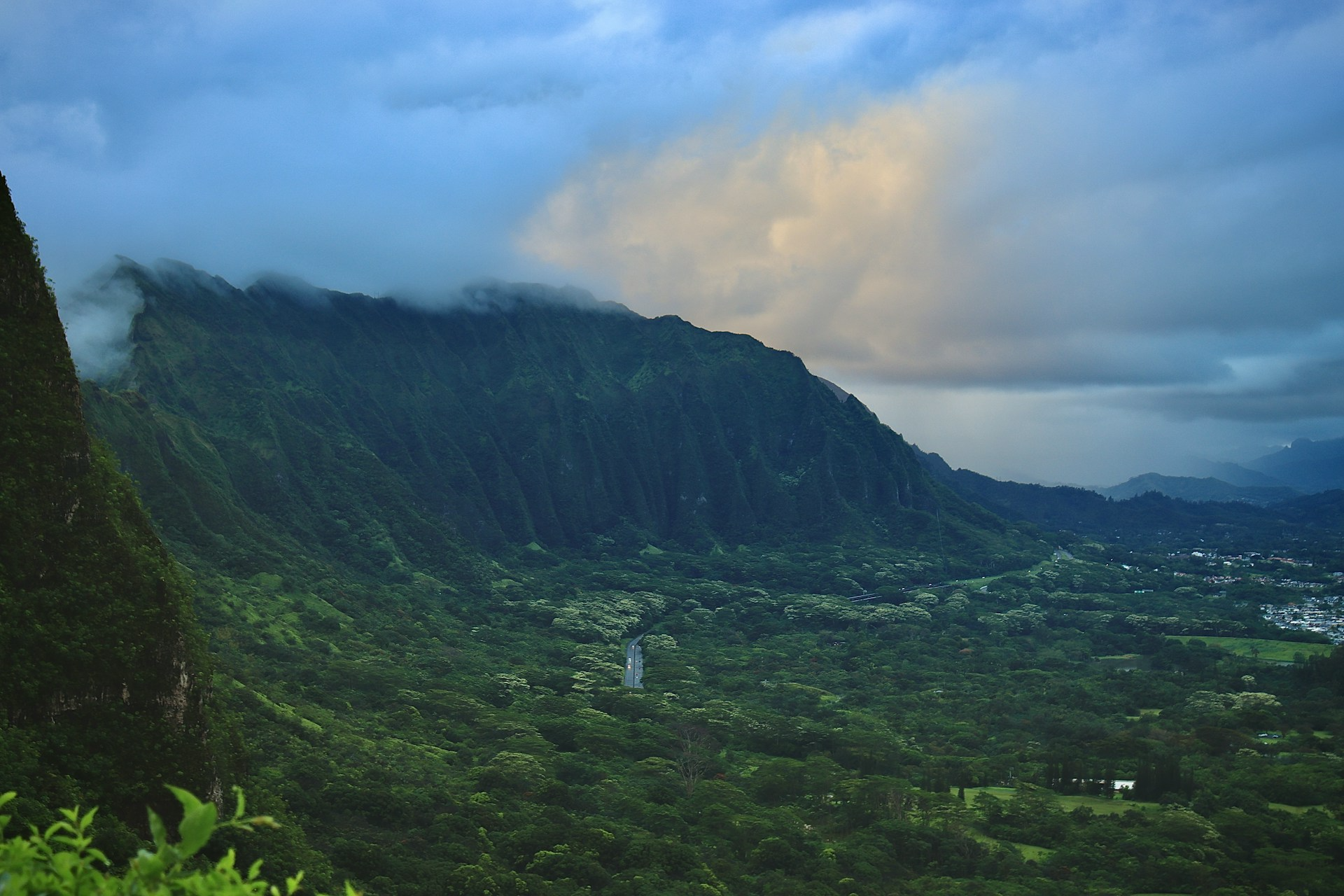
The Nuuanu Pali, also known as Nuʻuanu Pali, is a site of deep historical significance.
One of the most important and bloodiest battles in Hawai’ian history took place here in 1795. King Kamehameha I and his army invaded Oʻahu and won the struggle that united the Hawaiian Islands.
Kamehameha’s army marched to Nu’uanu Valley to face Kalanikupule’s troops. Kamehameha’s men gained an advantage and forced Kalanikupule’s soldiers to retreat further up the valley, where they were pursued and driven over the steep cliffs to their deaths.
It’s been said that not a single Oʻahu warrior that got into the upper part of the valley escaped alive.
The name of the historic battle of Nuʻuanu Pali is Kaleleake`anae, which means “the leaping of the mullet fish.”
When approaching from the windward side of the island, just above and to the left of the Lookout you can see two notches cut into the ridge line.
The notches are evidence of unique defense mechanisms; they were man-made by warriors to house cannons. King Kamehameha’s warriors disabled the cannons in the Battle of Nuʻuanu, and this helped him to conquer Oʻahu.
Formation Of The Old Pali Road
In 1897, an engineering firm was hired to build what is now called Old Pali Road. When you are at the Pali Lookout, you can see the old road going down the mountain to the right. It’s a great place for walking or hiking, and has beautiful views!
During construction of the road, workers found the century-old remains of Kalanikupule’s slain warriors – an estimated 800 human skulls and other bones – at the foot of the cliffs.
How To Reach Nu’uanu Pali Lookout Point?
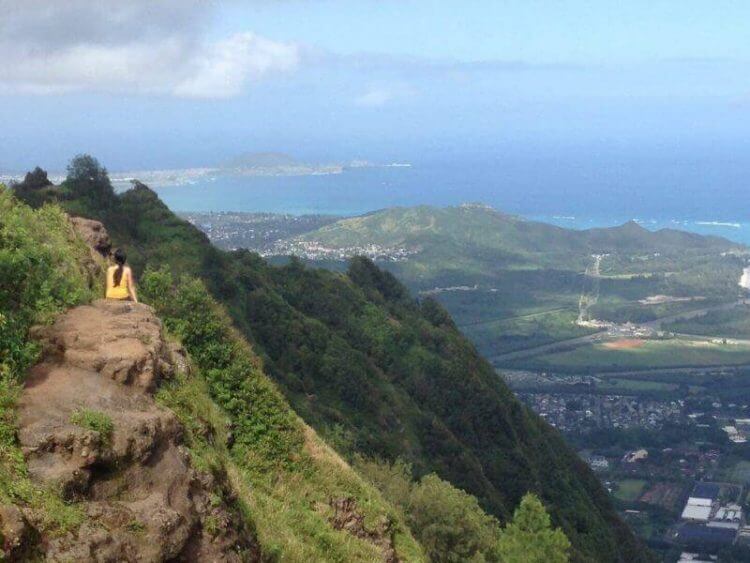
Pali Lookout rests along Oahu’s Pali Highway within Nu’uanu Pali State Park. Imagine it snuggled between Honolulu and Kailua on the island’s southern edge.
Reaching here means taking a 5-mile jaunt from downtown Honolulu. After the short walk, you’ll land at this historically rich spot, which offers a spectacular view of the towering Koolau cliffs and the lively windward coast below.
And I kid you not, before reaching the point itself, you’ll see for yourself why this place is lauded so much. The journey itself is a spectacle, winding through the mountainous terrain of Pali Highway, enveloped in verdant foliage.
If you are planning to visit the place by car, the route is pretty simple. Starting from Waikiki, get on to the H-1 Freeway heading west. Keep moving along the Pali Hwy (Hwy 61).
Just before you reach the Pali Tunnels, move onto the Pali Lookout exit, and voilà – park in the parking lot and walk comfortably up to the lookout.
However, we understand that not everyone can drive a vehicle. If you’re one of them, we guess you’ll be relying on the bus for your daily commute.
Now, if you want to visit this place but are limited to the bus, you’re not missing out on anything. The route may be a bit challenging, but it will be worth every step.
Just remember the number: #67. This Oahu bus goes to the end of Nu’uanu Pali Dr. en route to Kailua. What’s the challenging part, I said, is the hike.
When you travel on a bus, you have to hike uphill along the highway to reach the lookout—about half a mile’s worth.
So, unless you’re up for a scenic trek, it might not be the most convenient option. But, if you’re up for it, I can guarantee that you won’t regret any bit.
What To See Here?
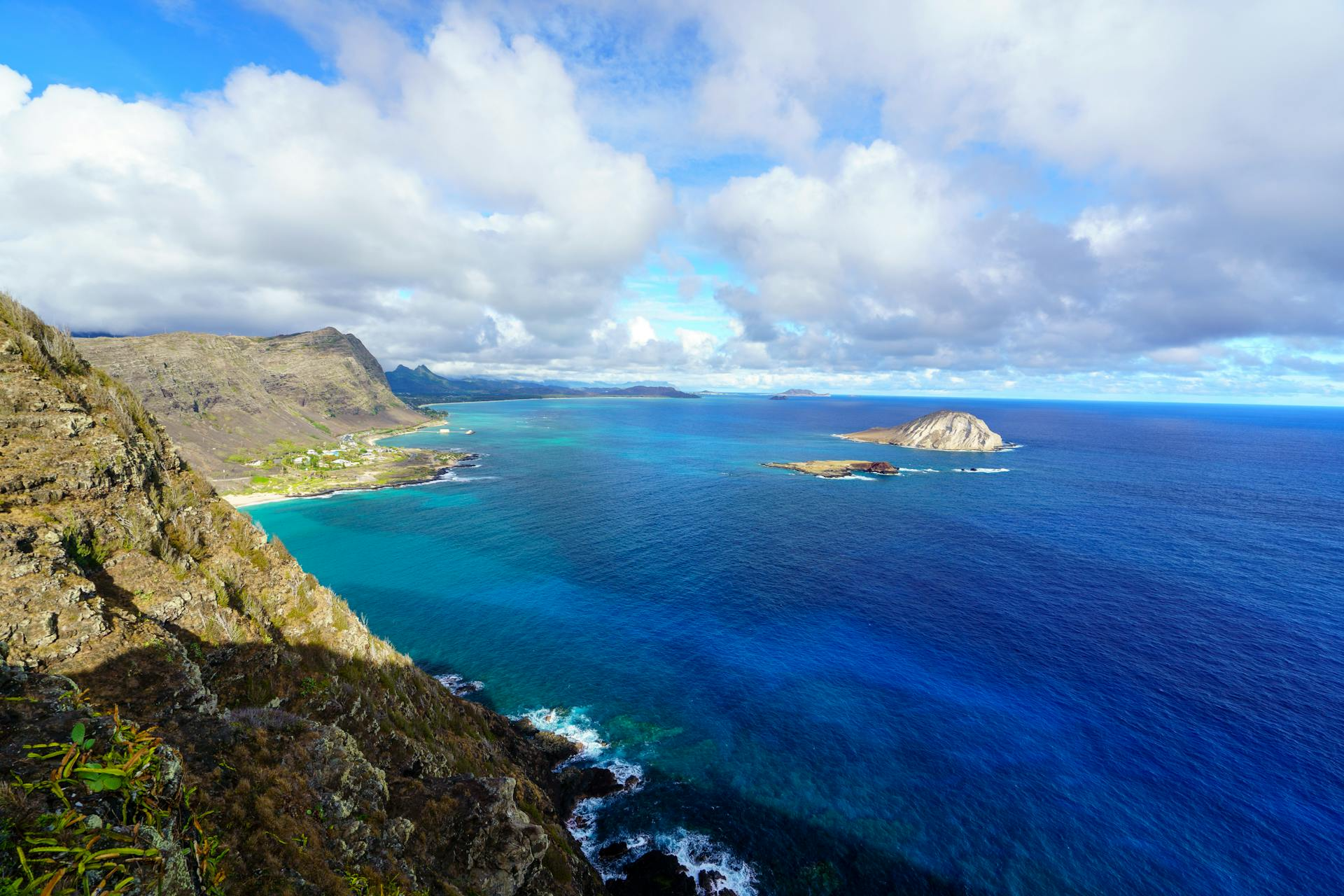
By now, we know that the Pali Lookout is on the windward Oʻahu. But after reaching here, what can you expect to see?
Pali Lookout isn’t just a beautiful tourist spot—it’s home to some of Hawaii’s most awe-inspiring vistas. This lookout point sits atop a cliff, which lets you treat your eyes to sweeping panoramas of the majestic Koolau Range, Kailua, and Kaneohala Mountains, which are covered by mesmerizing stone terrace.
Standing at the edge of the Pali Lookout Point, you can soak into the breathtaking sights of the famous Kualoa Ranch, Kaneohe Bay, the Kaneohe Marine Corps Base and Chinaman’s Hat Island. Looking around, you can even catch a glimpse of the historic Molena Point Lighthouse in the distance.
When the weather is quiet, you enjoy the view of the pristine Pacific Ocean. And guess what? Who said bats can only be seen at night? If you’re lucky, you might spot fruit bats taking flight from their homes deep within Manoa Valley below.
But Pali Lookout isn’t just about the views – it also boasts a series of hiking trails. So, if you’re an adventurer, you can move ahead and get on these trials to make your day even more exciting.
The Makapuu Lighthouse Trail is one place that catches the attention of many travelers. The trail goes on for 4 miles along a rugged coastline, which means you’ll also be lucky enough to see the beautiful Makapuu Beach.
Finally, if you love exploring unique animals, Pali Lookout is a haven for native species. From native hawks to the cute little nene (Hawaiian goose), you’ll see a variety of birds as you wander the trails.
Interesting Legends Around Nuuanu Pali Lookout
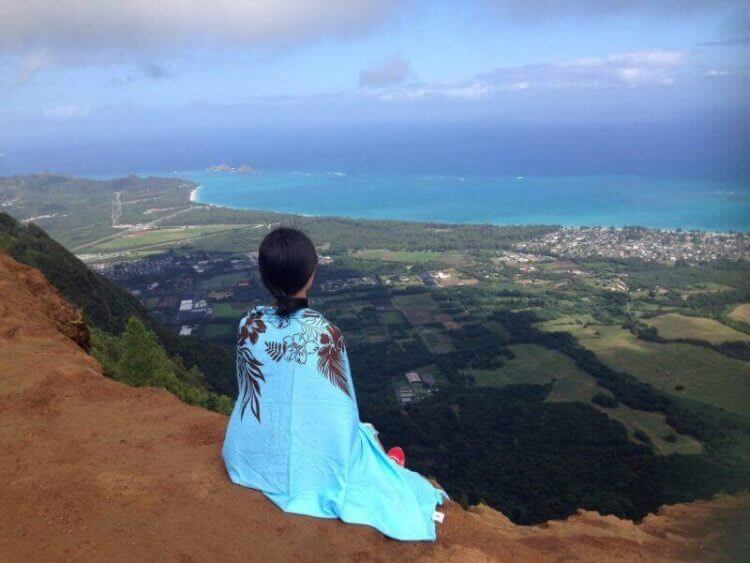
There are a number of legends involving the Pali and its surrounding areas. One such legend states of two large stones called Hapuʻu and Ka-lae-hau-ola located near the back of Nuʻuanu Valley.
These stones are said to represent a pair of goddesses who were guardians of the passage down the Pali.
To ensure a safe trip, travelers would leave offerings of kappa (bark cloth) or flowers, and in order to gain protection against evil, parents would bury the umbilical cords of their newborns at the entrance.
Another story tells of a moʻo wahine (lizard woman) lingering around the pass. The moʻo wahine is said to be a mythical creature who transforms herself into a beautiful woman and leads male travelers off the cliff to their deaths.
Hawai’ian folklore holds that you should never transport pork over the Nu`uanu Pali. This is especially true at night, as hungry spirits haunt the Pali in search of food. Stories have been told of assaults by ghosts and cars mysteriously stopping until the pork is removed.
The root of this myth has been traced back to a disagreement between Pele, the volcano goddess, and Kamapuaa, a half-human half-pig god. It is said that Pele would not allow Kamapuaa (in the form of pork) to trespass on her side of the island.
In an attempt to deter the spirits, truckers are known to tie a fresh green ti leaf, banana leaf, or a strip of bamboo around the pork – a practice called “Placing a Law upon the Food”.
FAQs
What is The Pali Lookout at Kaneohe Bay?
The Pali Lookout is a scenic viewpoint located along the Pali Highway on the island of Oahu, Hawaii. It offers breathtaking panoramic views of Kaneohe Bay and the lush surrounding landscape.
Is there an admission fee to visit The Pali Lookout?
No, there is no admission fee. The Pali Lookout is open to the public and free to visit.
Are there any safety precautions I should be aware of when visiting The Pali Lookout?
Yes, it’s important to stay behind any safety barriers or railings at the lookout, as the cliffs can be steep and dangerous.
Embrace the Beauty Of Oahu At The Pali Lookout
The Nu’uanu Pali Lookout isn’t just your run-of-the-mill panoramic spot in Hawaii. Think of it like a time capsule that holds stories of battles and legends while giving you killer views of Kaneohe Bay and the mountains.
So, whether you’re planning a day trip from Honolulu or exploring Oahu from afar, Pali Lookout promises a perfect blend of hiking, scenery, and wildlife – a true slice of Hawaiian paradise!
Useful Information:
Nu’uanu Pali State Park is open daily (weather permitting) from 6:00 a.m. – 6:00 p.m.
Admission is free. No free parking. Click here for more details.
It is extremely windy. The trade winds blow through the valley between the high mountains on either side, forming a strong wind tunnel, thus a light jacket is recommended (as are waterproof backpacks) You are also advised to remove anything that may be blown away by the gusty winds, and to hold children’s hands.
